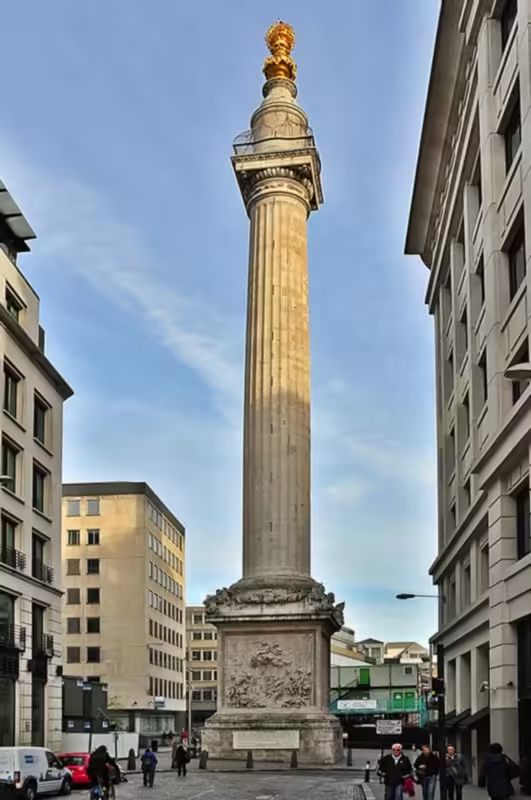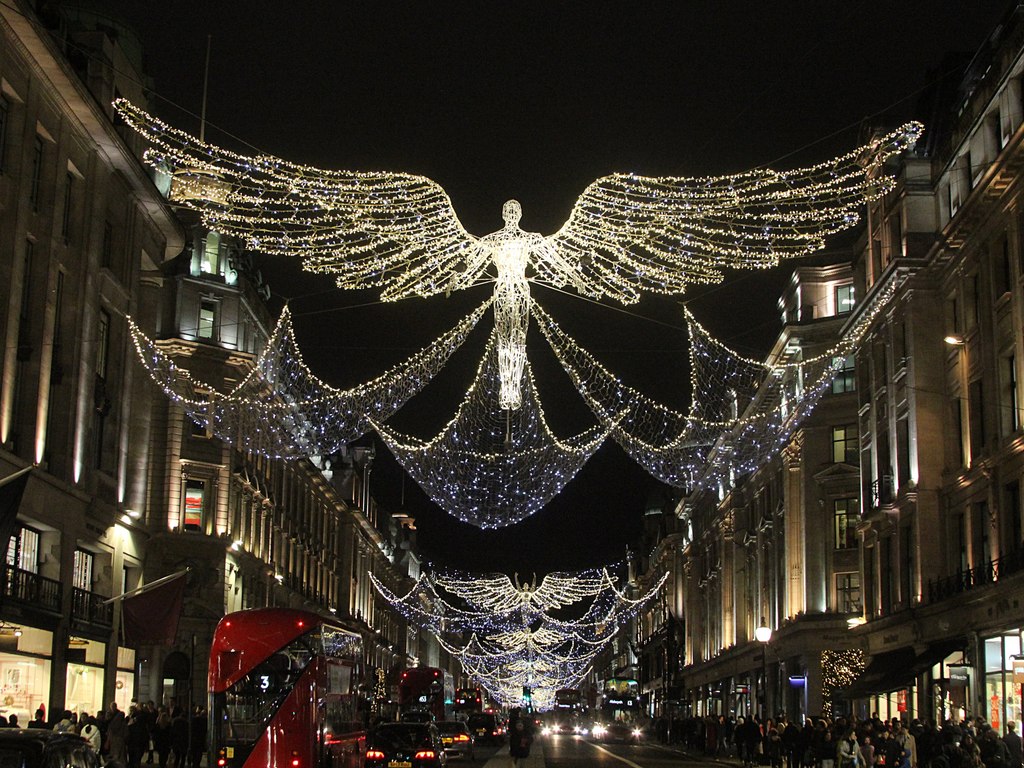Wandering through London is like stepping into a living museum. The city is dotted with grand monuments, each one holding tales of heroes, history, and resilience. From Victoria Memorial to Cleopatra’s Needle, these statues and memorials carry the legacy of a bygone era. I made a short list of Must-See Monuments in London. Let’s explore the stories that bring these landmarks to life.
The Victoria Memorial: A Tribute to a Legendary Queen
Standing before Buckingham Palace, the Victoria Memorial is an ode to Queen Victoria, one of Britain’s most beloved monarchs. Inaugurated in 1911, this majestic sculpture celebrates her long reign and the British Empire’s golden age. Sculpted by Sir Thomas Brock, the memorial is adorned with figures symbolising Justice, Truth, and Motherhood.
Surrounded by the beauty of Green Park and St. James’s Park, the Victoria Memorial creates a serene space for locals and tourists alike to pause and marvel. The bustling palace guards, along with the ceremonial Changing of the Guard, only add to the grandeur of this experience.

Nelson’s Column
Nelson’s Column: A Hero’s Triumph Over the Seas
In Trafalgar Square, Nelson’s Column rises above the city skyline, celebrating Admiral Horatio Nelson’s victory at the Battle of Trafalgar in 1805. Crafted by William Railton, the 169-foot column stands tall, with four bronze lions guarding its base.
The square, always lively with street performers and art installations, has become a cultural hub. Yet Nelson’s figure, looking out towards the Thames, reminds every visitor of Britain’s naval legacy and the courage of its heroes. Every glance at the towering column evokes admiration for the seafaring strength that once defined this island nation.
The Cenotaph: A Solemn Tribute to the Fallen
On Whitehall lies The Cenotaph, a solemn tribute to those who served in both World Wars. Designed by Sir Edwin Lutyens in 1920, it stands as a poignant reminder of the sacrifices made for freedom. Unlike other monuments, the Cenotaph is bare of decoration, its simplicity adding to its profound impact.
Every year on Remembrance Sunday, crowds gather here, wreaths in hand, to honour the lives lost in war. It’s a moving sight, especially with the grand buildings of Whitehall standing watch. In silence, visitors reflect on the cost of conflict and the resilience of the human spirit.
The Albert Memorial: Queen Victoria’s Tribute of Love
Nestled in Kensington Gardens, The Albert Memorial is a Victorian marvel dedicated to Prince Albert, Queen Victoria’s beloved husband. Completed in 1876, the memorial is a flamboyant display of Gothic Revival architecture, adorned with statues representing the arts, sciences, and various continents.
Surrounded by Hyde Park’s vast green expanse, the memorial is a stunning sight, especially in the autumn when the leaves add a golden backdrop. It’s easy to imagine Victoria’s grief and deep love for her prince while walking around this grand tribute. The statue of Albert, holding the catalogue of the 1851 Great Exhibition, feels both timeless and intimate.

The Monument
The Monument to the Great Fire of London: A Symbol of Resilience
Rising near the site where the Great Fire of London began in 1666, The Monument commemorates the city’s rebirth from the ashes. Designed by Sir Christopher Wren, the 202-foot column is as high as it is far from the bakery where the fire ignited.
Visitors can climb its 311 steps to enjoy views of London’s evolving skyline. The area around The Monument is a fascinating mix of old and new, with historic buildings standing alongside modern skyscrapers. This blend of architecture embodies London’s spirit of resilience and growth—a city that rises from its challenges.
Cleopatra’s Needle: An Ancient Obelisk with a Mysterious Past
Beside the River Thames stands Cleopatra’s Needle, an ancient Egyptian obelisk gifted to Britain in 1819. Though it dates back over 3,500 years, its journey to London was an adventure in itself, marked by storms and shipwrecks.
Today, this iconic structure, flanked by two Egyptian sphinxes, offers an exotic touch along Victoria Embankment. The bustling riverside contrasts with the ancient aura of the obelisk, reminding visitors of London’s global connections and fascination with history. Its hieroglyphs tell tales of ancient Egyptian gods, making this monument a mysterious landmark within the modern city.
Wellington Arch: A Gateway to Victory
At Hyde Park Corner stands the Wellington Arch, commemorating the Duke of Wellington’s victory over Napoleon. Built in 1825, the arch was intended to celebrate Britain’s triumph and serve as a grand entrance to London. Its colossal bronze quadriga, added in 1912, depicts the Angel of Peace descending on a chariot.
Located near the lush greenery of Hyde Park and the busy roads of Piccadilly, the arch offers visitors a view into London’s layered history. The arch, now housing a museum on the Duke’s life, lets you walk inside and imagine a London long gone but never forgotten.
Marble Arch: A Royal Gateway
Originally built as the entrance to Buckingham Palace in 1827, Marble Arch now stands at the bustling corner of Oxford Street and Hyde Park. Designed by John Nash, it was inspired by Rome’s Arch of Constantine and once served as a ceremonial entrance for the royal family. Relocated in 1851, the arch today sits near Speaker’s Corner, where voices from around the world gather to debate and discuss. The arch’s grand white marble structure, contrasting with London’s modern architecture, draws locals and tourists alike, each captivated by its regal beauty.
The RAF Bomber Command Memorial: Honouring Bravery
Tucked within Green Park, the RAF Bomber Command Memorial is dedicated to the courageous crew members who served in WWII. Unveiled in 2012, this bronze sculpture, encased in Portland stone, portrays seven aircrew members looking out with quiet dignity. The tranquil surroundings of Green Park make it a peaceful place for reflection, while the memorial itself serves as a testament to the sacrifice of 55,573 men. This corner of the city carries an atmosphere of gratitude and solemn remembrance for all who visit.
Crimean War Memorial: Remembering the Fallen Heroes
On Waterloo Place, the Crimean War Memorial stands tall, commemorating the soldiers and sailors who served in the Crimean War. Sculpted by John Bell, it was erected in 1861, capturing a bold female figure of Honour surrounded by guardsmen. The memorial’s grand placement on Waterloo Place, with St. James’s Park just a short stroll away, adds to its historical charm. The statue honours bravery, celebrating the resilience of those who fought on distant battlefields.
Each of these monuments stands not only as a work of art but also as a storyteller. As you walk through London, you feel the echo of battles won, lives lost, and moments of glory etched into the city’s history. Whether you’re gazing up at Nelson’s Column or reflecting at The Cenotaph, London’s monuments offer a unique insight into Britain’s past and the enduring spirit that defines this remarkable city.


